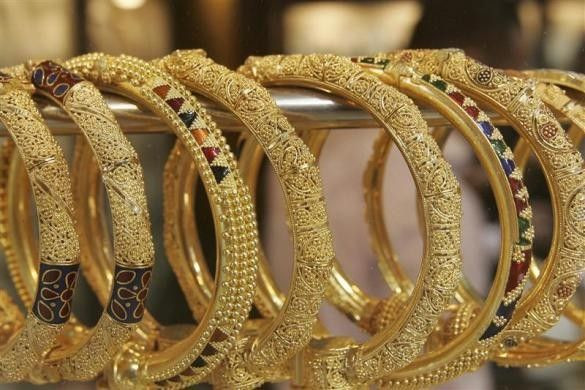India's gold demand likely to recover to pre-crisis level: WGC

Indian gold demand is likely to recover near to its pre-credit crunch level following the fall in demand in 2009, said World Gold Council (WGC) on Friday in a report titled India: Heart of Gold.
Gold jewellery demand in India, the world’s largest gold jewellery market, rose 67 percent year-on-year to 272 tonnes in the first half of 2010, despite the higher gold price, market sentiment remains positive, especially with the local gold market also benefitting from the strengthening of the rupee against the US dollar, said the report.
Over the same period, the average domestic gold price surged to almost 52,800 rupees per ounce (oz), before hitting a new high of 60,460 rupees/oz on October 15, 2010.
The recovery in Indian demand for gold investment has stemmed from an increased appetite for capital preservation among local investors’, as well as for gold’s properties as a US dollar hedge; heightened risk aversion; and higher inflation expectations, the report said.
In 2009, total Indian gold demand reached 15 percent of the global gold market to 974 billion rupees ($19 billion). Over the past decade, the value of gold demand in India has increased at an average rate of 13 percent per year, outpacing the country’s real GDP, inflation and population growth by 6 percent, 8 percent and 12 percent respectively.
Based on WGC estimates, India owns over 18,000 tonnes of above ground gold stocks worth approximately $800 billion at current gold price and represents 11 percent of global stock. This is equivalent to nearly half an ounce of gold ownership per capita.
At the end of 2009, Indian consumers’ price expectations were strengthened by the Reserve Bank of India’s (RBI) purchase of 200 tonnes of gold from the IMF and the transaction reinforced the perception among local consumers that gold is reliable and safe as a monetary asset.
The country currently has one of the highest saving rates in the world; estimated at around 30 percent of total income, of which 10 percent is invested in gold. Continued rapid economic growth and urbanisation will create greater wealth but also inflationary pressures stimulating gold demand, said the report.
Currently, India and China together account for approximately 25 percent of annual gold demand. They are likely to grow further as a proportion of demand in years to come.
Despite being the largest global gold consumer, Indian jewellery consumption intensity is still relatively low. Its consumption of jewellery on a per capita basis of 0.4 grams in 2009, remains below countries such as Italy and the US. This is a reflection of both the country’s large population and low incomes.
India’s gold Exchange Traded Funds (ETFs) market total holdings grew 77 percent to 11 tonnes in recent quarters by the end of August 2010, from 6 tonnes in the same period last year. Gold ETFs are structured to allow the inclusion of investments other than gold for up to 10 percent of their assets. However, currently all the Indian ETFs are backed by physical gold.
India is currently Asia’s third largest economy and its recent growth compared favourably with that of China. The domestic economy has grown at an average 8 percent over the past four years and is projected to grow at 8.5 percent in FY2010 according to Reserve Bank of India (RBI).
The International Monetary Fund (IMF) also expects the outlook for India’s economy to remain strong and forecasts the country’s real GDP growth to remain in excess of 8 percent from 2010-15.
Indian gold imports play an important role in the domestic gold market since India currently produces around 0.5 percent of its annual gold consumption. The value of annual gold imports increased by 1,015 percent between 1992 and 2009. In 1992, gold imports were approximately 88 billion rupees, this increased to 881 billion rupees by the end of 2009.
The main participants in the domestic gold industry, including State Reserve Bank of India and commercial banks such as HDFC, India Post Office, Muthoot Pappachan Group, and gold jewellers (such as Tanishq, GRT, TBZ to name a few) provide consumers and investors with a broad range of other channels and products. These products include the sale of gold coins and bars, gold saving schemes and “Swarna Varsham” microfinance gold link scheme.
Indian gold demand has been impacted by the monsoon rains, however, demand in each state seems to be dictated by its own marriage and harvest season.
Since 1992, Indians have recycled an average of 92 tonnes of gold per annum. In 2009, the supply of domestic recycled gold rose 29 percent to 116 tonnes while domestic gold demand fell by 19 percent, added the report.
© Copyright IBTimes 2024. All rights reserved.




















